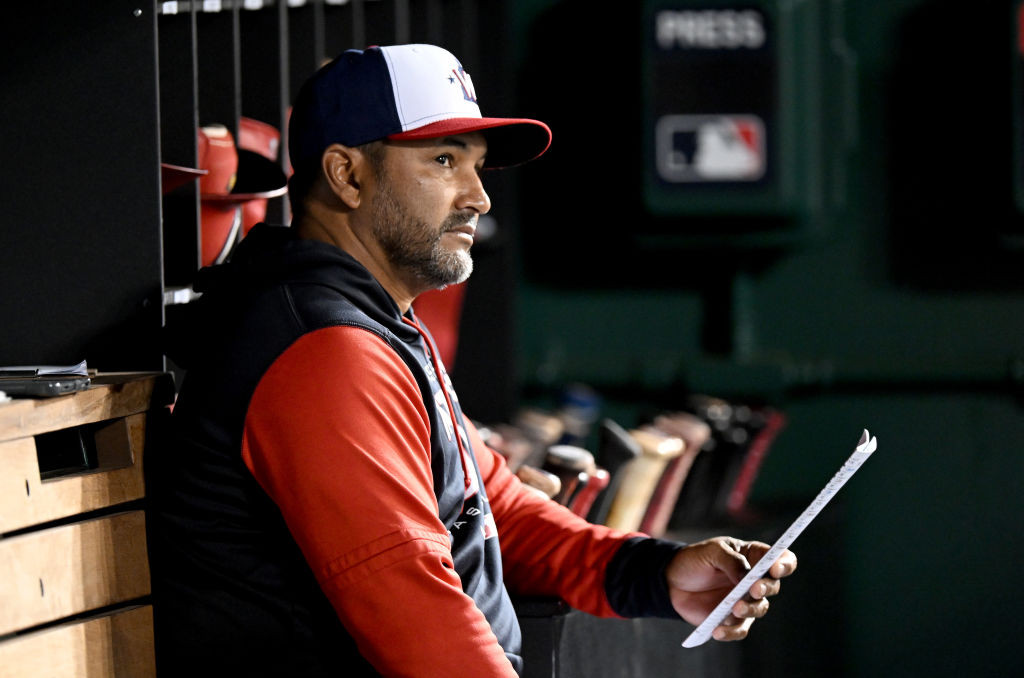This article is part of an ongoing series examining what a year of war in Ukraine has revealed.
The Western response to Russia’s invasion of Ukraine has been less a problem of strategy than of tactics and execution. After one year of fighting, the basic idea—support Ukraine and defeat Russia—has held up well; the implementation has not. That holds especially true for the United States.
Successful statecraft has much in common with the concept of aerial combat formulated by twentieth-century U.S. Air Force pilot and military thinker John Boyd. From his experience in the Korean War and later studies, Boyd concluded that fighter pilots engage in combat in a four-stage cycle: a pilot observes what is going on, orients himself to the environment, decides what to do, and acts accordingly. The tighter the loop—the quicker and more efficiently each stage is mastered—the greater the chance of success, and, indeed, survival.
Throughout the war in Ukraine, the West has excelled at the first stage of Boyd’s cycle. It has closely tracked the Russian buildup around Ukraine. And beyond the first stage, the West has generally done the right thing—supporting Ukraine and sanctioning Russia. But again and again, it has taken far too long to execute, lacking urgency and agility. The path from observation and understanding to decision and action has been painfully slow. Along the way, there have been many missed opportunities to seriously weaken Russia and enable Ukraine to win. What a year of war has shown, then, are the limits of Western statecraft in the face of the greatest military challenge that Europe, and in some measure the entire free world, has faced since the Cold War.
WESTERN FUMBLES
When Russian forces began preparing for war, in January and February 2022, Boyd’s first stage, observation, was not difficult for the West: intelligence agencies and private analysts could see Russian forces deploying around Ukraine’s periphery and track Moscow’s preparations for war. But it was harder for some analysts to orient themselves to the idea of a full-scale invasion and to understand Russia’s reasons for the war. At the time, Western leaders treated Russia as a state with normal security concerns—partly because of the influence of apologists for Russia, who accepted the Kremlin’s stance that Russia had somehow been unfairly treated when its own leaders, not Americans or Europeans, destroyed the Soviet Union and dissolved its empire. In 1990, then U.S. Secretary of State James Baker carelessly remarked to Soviet leader Mikhail Gorbachev that NATO would not expand one inch eastward. Russians have turned the United States’ failure to uphold that comment, which was not an official policy or document, into what they see as a legitimate grievance. It is not.
Moreover, few if any Western leaders paid adequate attention to Russian President Vladimir Putin’s article “On the Historical Unity of Russians and Ukrainians,” published in July 2021, more than six months before the Russian invasion. Fewer still saw how seriously Putin took the threat of democratic contagion to his regime. In December 2021, Putin called on Europe to dismantle its security order. Nonetheless, many Western leaders did not accept that they were dealing with a man who aimed at nothing less than restoring a Russian empire based on chauvinism, autocracy, and force. Some of them still struggle to see this.
Furthermore, when an invasion did become increasingly certain, Western officials failed to accurately assess the likely course of the impending war. They let themselves be convinced by experts (whose interpretations have yet to receive the critical examination they deserve) that Russian forces would quickly roll over at least the eastern half, if not all, of Ukraine. Some even doubted that guerrilla resistance could continue. They accepted the view that Ukrainian President Volodymyr Zelensky would surrender or flee—indeed, according to the Associated Press, the United States offered Zelensky help to escape—and that most Ukrainians would accept, if unhappily, their reincorporation into the Russian empire.
EARLY BIRD GETS THE WIN
But there was one way in which U.S. leaders displayed exemplary statecraft at the beginning of the war—by exposing the Russian buildup along the Ukrainian border and warning both Ukraine and Western allies of Russian intent. It is no coincidence that this effort was led by William Burns, the director of the CIA and one of the finest diplomats of his generation. By publicly sharing intelligence and alerting the world of Russia’s military expansion, the U.S. government created a unified Western response to Russia, restored its own intelligence credibility after the failures of the Iraq War, and established a strong basis for arming Ukraine’s defense forces—forces that were, as many were surprised to discover, willing to fight to the death.
Over the course of the 12 months since the invasion, the West has generally taken the right course, but too slowly. Ukraine’s backers have repeatedly discovered that Ukrainians could quickly and effectively use the weapons that they were being given. That lesson was first learned with handheld antitank and antiaircraft weapons, which were supplied in small quantities in January 2022; then with U.S. heavy artillery, beginning in April 2022; then with medium-range rocket systems, first sent in June 2022; and finally, with main battle tanks. But in none of these cases were Ukraine’s needs adequately anticipated. Instead, the West dragged its feet in providing the necessary tools and training. For example, Germany and the United States did not agree to send tanks to Ukraine until January 2023, meaning that they will not be ready for use until late this spring—possibly too late for them to make a difference in Russia’s expected late-winter and early-spring offensives.
In war, sluggish decision-making kills. In every conflict, clocks are ticking in different places and at different paces. There are clocks determined by weather and muddy seasons, by the patience of besieged populations, by elections, by training cycles and mobilization of troops, by the ebbs and flows of public and military morale, and by the supply of weapons and ammunition. In the realm of decision and action, the West has consistently dawdled, undermining not only the Ukrainian cause but also its own.
For example, large-scale programs to train Ukrainian soldiers in Germany, Poland, and the United Kingdom of the kind the British began in July 2022 could have been established on a large scale months earlier. The United States could have put High Mobility Artillery Rocket Systems (HIMARS) into the pipeline to Ukraine as soon as the war began, and Ukrainians, who are remarkably fast learners, could have been trained and ready to use them by the time the war shifted to the east last summer. A military assistance mission under U.S. command could have been stood up last spring, headquartered in eastern Europe. Western main battle tanks could have been delivered in the fall of 2022—when Ukraine was on the move and Russia had not yet assembled more forces—as could have the long-range missiles that Ukraine needs to destroy Russian logistics.
The Ukrainians, by contrast, have been fast and flexible, learning in a matter of weeks to use weapons systems that in peacetime require months of training. In this, as in certain other respects, their military resembles Israel’s of an earlier era—ingenious, adaptable, not always the most skilled or best equipped, but able to improvise. Furnished with the right weapons, Ukraine could have further exploited the collapse of Russian units near Kharkiv in September 2022 and weakened the entire Russian position in the south of Ukraine. And today, a Ukrainian military equipped with long-range missile systems could be already dismantling the logistical infrastructure on which the Russian invaders depend. But Ukraine has been held back by its patrons, which, alas, are far less nimble.
THE FEAR FACTOR
Western statecraft has stumbled, in part, because Western leaders have given too much credence to their fears of Russian escalation—and far worse, broadcast them. Since the early months of the war, officials in the United States and western Europe have repeatedly asserted the dangers of possible nuclear escalation by Moscow. These anxieties have been exaggerated. Using nuclear weapons would be illogical and unproductive from Russia’s point of view and would violate the core interests of its only real ally, China. By advertising their worries, presidents and prime ministers—including French President Emmanuel Macron and U.S. President Joe Biden—have unintentionally invited Russia to manipulate them.
Western strategists have also failed to accurately assess Russia’s future. Even Henry Kissinger, the former national security adviser and secretary of state, asserted in 2022 that despite Russia’s “propensity to violence,” the country has contributed “to the global equilibrium and to the balance of power for over half a millennium.” To the contrary: historically, Russia has not only consistently expanded its empire but also has celebrated conquest. Such sentiment is indeed stronger than ever.
Dmitri Trenin, a former Russian military intelligence officer who led a U.S.-headquartered think tank in Moscow, was correct when he pointed out that Russia’s relationship with the West today has ruptured to a degree comparable to the split caused by the Bolshevik Revolution, in 1917. For a brief time after 1989, Russia looked as though it might join a more open and peaceful world order. But that period is over, and for the foreseeable future the West must deal with a Russia that is hostile, militarized, malevolent, and vengeful. That is an unpalatable conclusion for those in the West who prefer a different world order or a decisive pivot to Asia, but it is the reality.
Part of statecraft is about seizing opportunities. By the early fall of 2022, Ukraine’s surprising battlefield effectiveness and resilience had opened up a window in which one could imagine the liberation of much, if not all, of its territories. Had Ukraine managed to sever the land corridor between Russia and Crimea, for example, Russian forces would have struggled to maintain their hold not only on the parts of Ukraine that they had conquered since the invasion but also on Crimea itself. Such an outcome may still come to pass, but at an increasingly, and unnecessarily, high cost, now that Russia has had time to dig in and mobilize hundreds of thousands of additional troops.
The war raises the likelihood that Ukraine will, in the long run, be fully incorporated into NATO, armed largely at its allies’ expense. Some European politicians such as Petr Pavel, the new president of the Czech Republic, advocate for Ukraine’s integration into the West. At the very least, Ukraine can be armed and supported so strongly in the interim as to deter further Russian aggression. But it will require an overwhelming sense of urgency, commitment, and willingness to act on the right scale to make that happen. And creating a sense of urgency in turn will require a change in the style of U.S. statecraft vis à vis ambivalent allies such as Turkey or Switzerland. As hegemons go, the United States has been remarkably benign; indeed, it does not like to understand itself as a hegemon at all. But at this juncture in world history, when a great deal of prosperity and freedom depend on Ukrainian victory and—equally important—Russian defeat, it is time for the United States to get far more transactional.
In particular, Washington should become unbendingly tough with Russia-tilting European states, such as Hungary. It is often forgotten that Spain and Vichy France avoided joining Germany during World War II in part because the United Kingdom and the United States threatened to cut off their food shipments. The United States still has levers, such as trade and investment relationships, at its disposal. There are times to treat the antics of corrupt, irresponsible, or supine leaders of small but strategically placed countries with bemused detachment, and other times, like now, to twist their arms without compunction.
The United States urgently needs to send Ukraine a wide variety of arms, including long-range Army Tactical Missile Systems (ATACMS). The Biden administration should also use the powers of the Defense Production Act to mobilize domestic munitions industries and to eliminate bureaucratic obstacles, in addition to awarding the long-term defense contracts needed to expand capacity. It should begin long-term planning for Ukraine’s economic reconstruction and its arming against future threats. And the United States should launch a public information campaign, beginning with a presidential speech to explain the stakes for the United States in Ukraine.
A statecraft that is measured and seeks equilibrium and compromise has its place. But in a war it can be dangerous. Western, and in particular U.S., leaders picked up bad habits during the Cold War, in which incremental shifts and patient long-term engagement were the dominant note of security statecraft. During that period, too, a great deal of strategy played out through shadowboxing. That approach is less effective in today’s hot conflict. During the post-9/11 wars, in which the United States enjoyed a vast margin of conventional military superiority, U.S. leaders got used to having time to reconsider, study, plan, and negotiate. Convoluted alliances with gimcrack command structures were not immediately fatal. For example, NATO operated in Afghanistan while being nominally controlled by its headquarters in the Netherlands. And the United States could get by with a desire to succeed rather than to actually win. Such an approach would be feckless in Ukraine, the most serious European war since the end of World War II.
A statecraft in which leaders understand the world, size it up quickly and accurately, decide fast, and act with an extreme sense of urgency, at scale and with full commitment is what the United States and its allies need now. With it, a Ukraine that is free, whole, and secure can be rebuilt from the carnage. Without it, Russia can still pull some measure of success from a criminal war in which it has every chance of suffering a well-deserved and thorough defeat.
:format(webp)/cdn.vox-cdn.com/uploads/chorus_asset/file/24464849/bg_88fb5fbaca.jpg)
:format(webp)/cdn.vox-cdn.com/uploads/chorus_asset/file/24464872/4_175466d045.jpg)





/cloudfront-ap-southeast-2.images.arcpublishing.com/nzme/S754BEIRTFGOTNYRNLNAEH2HTQ.JPG)
/cloudfront-ap-southeast-2.images.arcpublishing.com/nzme/6JHEUX5NAVB4LLNAQ6YXXPPEXM.JPG)
/cloudfront-ap-southeast-2.images.arcpublishing.com/nzme/QPNMETCSMRBC5BPYGDGP4KYZVU.JPG)





:format(jpeg)/cloudfront-us-east-1.images.arcpublishing.com/tgam/RPFFZWFXRFOZPJEERW6TCSNZIY.jpg)
